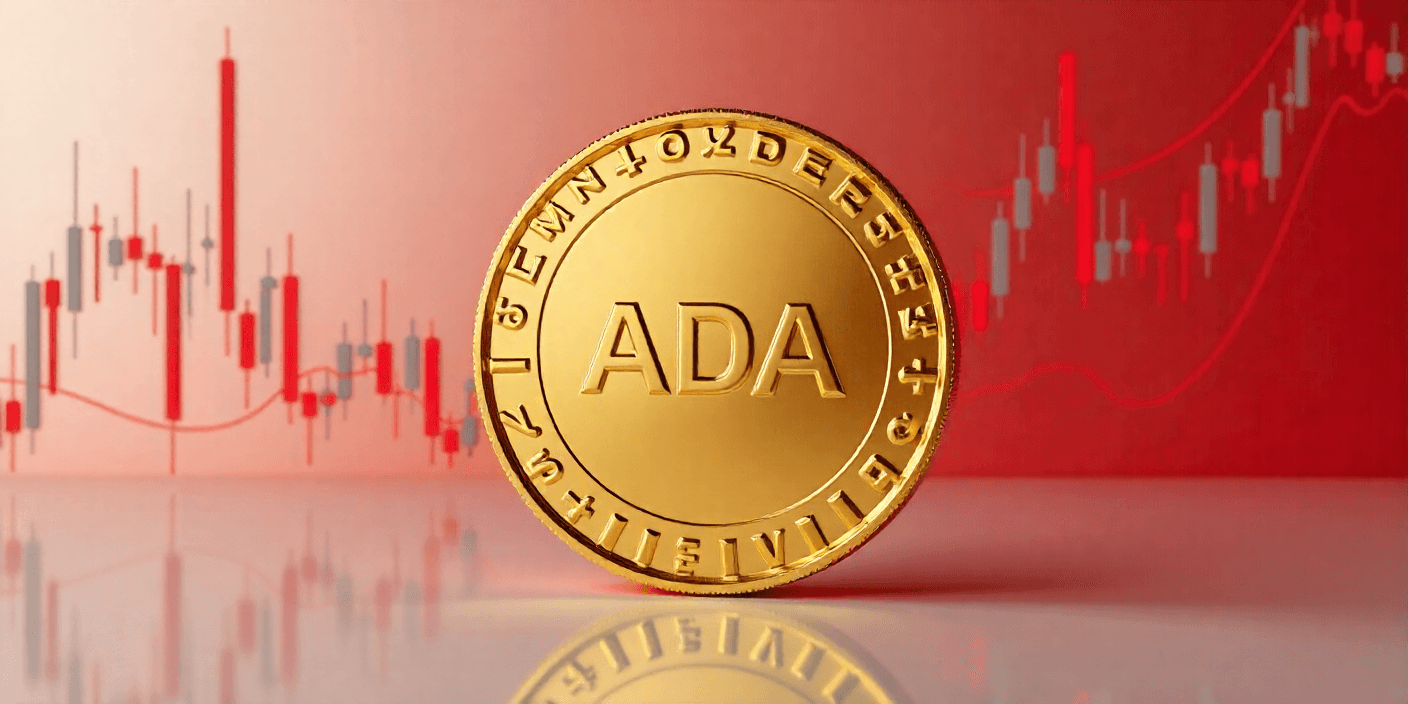
Understanding Cardano’s (ADA) Recent Downtrend
Cardano (ADA) has been experiencing a significant downward trend, leaving investors wondering about the future of the cryptocurrency. With macroeconomic uncertainty and Federal Reserve decisions playing a pivotal role, ADA’s price fluctuations are more about external factors than internal protocol failures.
In this article, we’ll dive into the technical analysis of Cardano’s price movement to separate fear-based assumptions from factual analysis.
Cardano’s Price Decline: A Trend, Not a Collapse
A glance at ADA’s daily chart reveals that the cryptocurrency has been caught in a consistent downtrend since early October. Using Heikin-Ashi candles, it’s evident that sellers currently dominate the market. However, while the selling pressure is strong, the structure remains controlled rather than chaotic, dismissing assumptions of an imminent collapse.
Additionally, Bollinger Bands analysis shows that ADA has been hugging the lower band for consecutive sessions. This pattern could suggest two outcomes: sustained selling pressure or an impending volatility reversal. Historically, cryptocurrencies rarely stay in such positions indefinitely, implying that the market may be approaching exhaustion.
Macro Factors Shaping ADA’s Performance
September’s U.S. job report indicated rising wages alongside higher unemployment. For markets, this presents mixed signals: potential inflation on one hand and signs of economic slowdown on the other. This uncertainty surrounding Federal Reserve policy decisions (rate hikes vs. cuts) directly impacts high-risk assets like ADA.
Currently, traders are exercising caution, waiting for clearer macroeconomic direction before risking capital. It’s important to note that ADA’s decline isn’t rooted in fundamental issues with the Cardano blockchain itself; instead, it reflects broader market sentiment driven by uncertainty.
Key Levels to Watch for Cardano (ADA)
Even as ADA’s price slides, it remains structurally intact, avoiding a catastrophic spiral. Support levels around $0.41 to $0.42 are still holding strong despite panic selling in October that tested these lines. If the Federal Reserve adopts a more hawkish stance by ruling out rate cuts, ADA could test further support zones at $0.33 to $0.35. However, these are normal pullback levels—not indicators of complete failure.
ADA’s Future: Weakness Doesn’t Mean Collapse
The critical question remains: Could ADA hit $0? The answer is no. A cryptocurrency goes to zero only in the event of a complete breakdown, which involves the collapse of the blockchain network, developers abandoning the project, validators ceasing activity, and delisting by major exchanges. None of this is happening with Cardano. In fact, Cardano remains highly active, with vibrant developer activity and liquidity locked in staking pools.
What’s Next for ADA?
If macroeconomic conditions improve and the Federal Reserve signals a dovish turnaround (rate cuts), ADA could rebound to levels around $0.50 to $0.55. The ongoing uncertainty is temporary, influenced by external factors rather than internal weaknesses within Cardano’s ecosystem.
For those interested in keeping their crypto investments in shape, monitoring market trends using tools like trading platforms can help you make informed decisions during volatile markets.
Conclusion: ADA Is Down But Far From Finished
Despite a steep downtrend in recent weeks, the ADA chart doesn’t suggest a trajectory toward extinction. With support levels holding and potential macroeconomic clarity on the horizon, Cardano remains a reliable blockchain protocol with a strong community. As the Federal Reserve’s next moves become apparent, ADA is expected to adjust accordingly but isn’t at risk of heading to zero as feared.



